Company: Apple Inc.
CEO: Tim Cook
Year founded: 1976
Headquarter: Cupertino, California, USA
Employees (FY2024): 164,000
Type: Public
Ticker Symbol: AAPL
Market Cap (Mar, 2025): $2.97 Trillion
Annual Revenue (FY2024): $391.04 Billion
Profit | Net income (FY2024): $93.74 Billion
Products & Services: Computers | Software | Phones | Watches | Tablets | Cloud Technology | Accessories | Music Platform | Cashless payment
Competitors: Microsoft | Lenovo | Google | Samsung | Toshiba | Dell | Sony | HP | Acer | Netflix | Disney | Amazon | Chase | Wells Fargo | Paypal | CitiBank | U. S. Bank | Youtube
Did you know?
Have you ever heard of Ronald Wayne? He is the third co-founder of Apple, after Steve Jobs and Steve Wozniak. Just 12 days after creating the company, he sold his 10% shares for a measly $800. Had he not sold his shares, it would be worth over $250 billion today.
In 2013, the original Apple computers were sold for over $671,400 at a German auction.
An Overview of Apple
Apple, Inc., is one of the most prominent companies in the world. It has been providing robust technology products and exceptional software services. Apple, which was founded by Steve Jobs, is headquartered in Cupertino, California.
Apple launched its first product, the ‘Apple 1 computer,’ in 1976. Since then, Apple has grown exponentially in terms of products and services.
Tim Cook, the company’s CEO, is one of the top and highest-paid CEOs in the world, with an annual compensation of $74.61 million in 2024.
Today, one of Apple’s most successful products is the iPhone. In fiscal year 2024, iPhone sales of $201 billion represented over half (51%) of Apple’s overall revenue of $391 Billion.
Image Source: Bullfincher.io
SWOT analysis of Apple
Here’s a detailed analysis of Apple’s strengths, weaknesses, opportunities, and threats.
Apple’s Strengths
1. Most Valuable Brand
Apple has been ranked #1 by Interbrand for the 10th consecutive year, with a brand value of $488.9 Billion. Microsoft is ranked # 2, and Amazon is ranked #3, with brand values of $352.5 billion and $298.1 billion, respectively.
Image source: Interbrand
2. Trusted and Reliable
Apple is among the most trusted companies for personal computers, advanced consumer electronics, application software, and innovative technology devices. It has millions of loyal customers, and the number is steadily increasing.
Apple has one of the industry’s highest NPS (Net Promoter Score), at 48. NPS measures customer satisfaction and brand loyalty.
3. Top Technology
Apple was the pioneer in introducing some of the most innovative products that have disrupted the technology world for the better (iPhones, iPads, AirPods, Apple Watch, Apple Vision Pro, Mac, etc.). Apple is committed to building and crafting more proficient technology devices.
Recently, Apple surprised its users with the release of the Shazam update, which allows users to add their favorite music tracks to their Spotify or Apple Music playlist without opening the App. The users can identify the tracks from the iOS Siri and add them to their playlist, enabling automatic synchronization with Spotify and Apple Music faster and better!
4. Brand Of Choice
It isn’t big news that Apple is a favorable brand in corporate offices, especially among creative professionals. Apple offers top-quality technology solutions for every corporation’s needs. Professionals prefer high-performance technology such as Mac Pro or iMacs for visual design, animation, video production, and other creative work.
5. Proficient Research & Development
Apple dedicates itself to its product designs. Careful study and extensive research help it understand customer needs and market trends. Apple continues to invest a significant portion of its revenue in research and development to ensure future growth and a competitive edge. For example, in fiscal year 2024, Apple spent $31.37 Billion (about 8%) of its revenue on R&D.
Image source: Bullfincher.io
6. Sustainability made Possible through Daisy
Daisy is an iPhone recycling robot that breaks down and disassembles iPhones. It strips them down to a single bolt, and most parts of an iPhone can be reused.
Daisy is designed to recover as many reusable parts as possible. These reusable parts are then categorized and safely stored for new manufacturing. Daisy has helped Apple move closer to its goal of using recycled or renewable materials for its products.
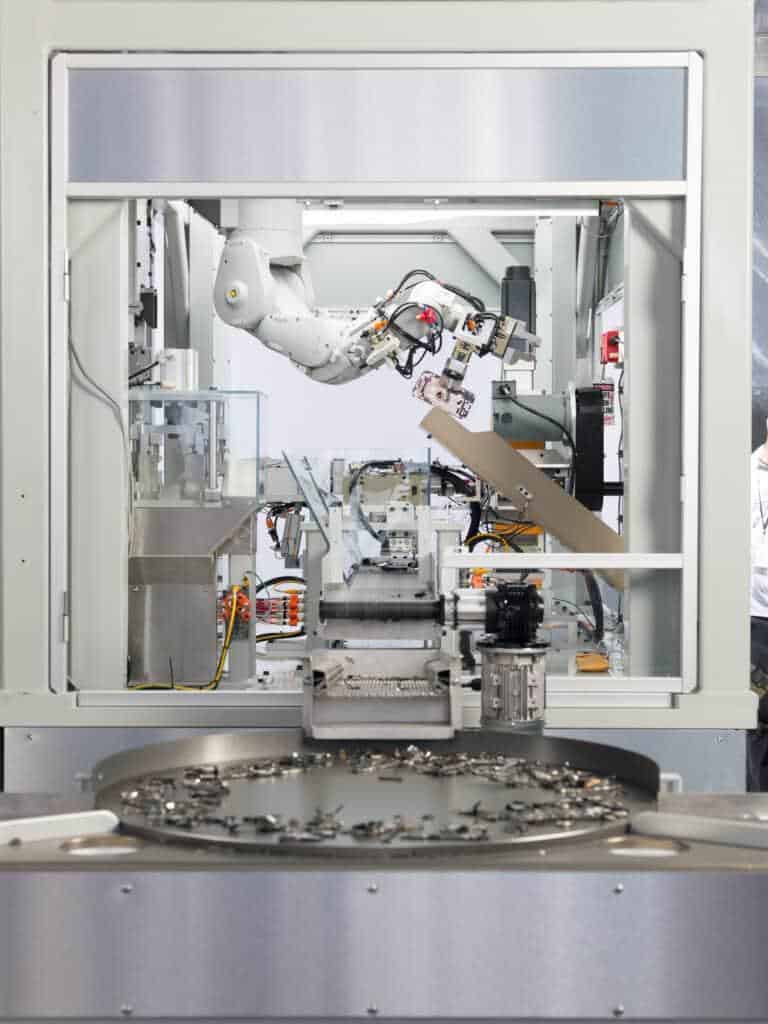
Image credit: Apple
7. Expansion in services
Apple has been expanding its services portfolio for many years. For example, about 24.6% of Apple’s annual revenue ($96.17 B out of $391 B in FY 24) came from its services, the second most significant contributor after the iPhone (51% of its revenue).
Apple’s services include digital content stores, streaming services, iCloud, AppleCare, and payment services. Recently, Apple has introduced many new services, such as Apple TV+, Apple News+, Apple Card (credit card services), Apple Arcade (game subscription), and Apple Fitness+.
Image credit: Statista
8. Highly Profitable Company
Apple is a highly profitable company and has consistently generated net income close to $100 billion in the last four years. Net income for the previous three fiscal years is as follows:
According to Statista, Apple generated $3074 of net income per second in fiscal year 2023.
Image credit: Statista
9. Apple Snatches the Top Spot
Apple’s iPhone just defeated Samsung as the top-selling smartphone in 2023.
IDC estimates that Apple is the only player in the top 3 smartphone providers who have shown growth in shipments and tops the most Q4 2023 shipments at 80.5M, followed by Samsung at 53M.
This marks the first time Samsung has lost the top spot since 2010. Apple’s year-round dominance suggests it’s weathering the industry slump better than its rivals.
10. Apple Ecosystem – An Economic Moat
Apple’s tightly integrated hardware, software, and services ecosystem has solidified its position as a leader in the consumer electronics industry.
Its seamless integration of devices and services, unified and enhanced user experience, network effect, pricing power, and switching cost create an incredible economic moat for the company. This moat gives Apple a long-term, sustainable competitive advantage in the tech industry.
11. Apple’s Operating System
Apple has focused on innovation and updating its operating system over the years. However, in 2025, Apple is planning a significant overhaul of its operating system for its Mac and iPhone platforms.
The update is anticipated to streamline the entire ecosystems’ design and user experience. This includes simplifying the style of icons, apps, menus, and system buttons, and offering more intuitive ways for users to navigate and control their devices. The company plans to incorporate the OS for its mixed reality headset, VisionPro, into the operating system. These changes will enable Apple to create a unified, consistent experience for its users across devices. This change is in tune with its continued focus on AI.
12. Environmental Initiative
Apple has been committed to reducing its carbon emissions since 2015 and is focusing on being carbon neutral by 2023 by bringing in renewable electricity for Apple Production. Apple is also focusing on building its products with more recycled and renewable materials with the rollout of the Apple Trade-In programs. MacBook Air is the first to use more than 50% recycled material.
Apple plans to remove plastic from its packaging by transitioning to fiber-based packaging in 2025.
13. Apple’s AI Initiatives
Apple has been delighting its users with upgraded and powerful product features.
It recently announced new version of iPad with M3 chip and featuring Artificial Intelligence capabilities to support AI tasks like summoning ChatGPT for addressing queries. Apple has been extending the Apple Intelligence capabilities which entails set of features with quick access to ChatGPT which enables users to write emails, messages and edit photos.
The company has been rolling out a suite of AI features in phases with more features and in more languages.
14. New Investments
Apple has recently announced its commitment to invest around $500 billion over the next 5 years in the US due to the growing tariff threats. The company intends to hire 20000 new workers and produce AI servers.
Apple will be opening a server factory in Houston, planned to be operational from 2026, and a manufacturing unit in Detroit, with the expansion in the current data centers in Iowa, North Carolina, Nevada, and Arizona.
15. Revenue from iNews
Apple is selling its advertising inventory from Apple News. So far, third-party vendors have been selling the Apple News ads, thereby limiting its revenue potential.
Apple will sell its premium sponsorship of curated content for popular events like the MET Gala, the US Open, along with banner placements, video ads, carousel ads etc.
Investing more in direct sales will enable Apple to deliver more ad revenue to its publishing partners, thus encouraging more free content on the Apple platform.
16. Tim Cook’s Salary Cut
In order to align with company performance and shareholders’ feedback, Tim Cook himself recommended the cut in his compensation package, which resulted in a 40% pay cut in 2023.
Image Source: Bullfincher.io
17. Apple is moving its iPhone production to India
Apple sells about 60 million iPhones in the US, roughly 80% of which are currently produced in China. However, due to higher tariffs on China, Apple plans to move most of its iPhone production (for the US market) to India instead of China. The company is in conversation with its contract manufacturers, Foxconn and Tata, to ramp up production by the end of 2026.
Apple’s Weaknesses
1. High Priced Products
Apple’s products can be considered a luxury due to their premium prices. The products are priced for middle and high-income consumers. Low-Income consumers can’t simply afford Apple products.
Due to their premium pricing, mainly middle or high-earning individuals can afford their products.
2. Limited Advertisement & Promotions
Apple has solidified its ground by establishing loyal customers, even with limited advertising resources. Its marketing relies heavily on its iconic and flagship retail stores.
Because of their success, Apple has been conservative on excessive spending towards advertisement in comparison to other big brands such as P&G, Pepsi, Verizon, and Coca Cola etc.
However, a continuous decline in retail store or shopping mall foot traffic poses a real challenge for Apple’s brand exposure and product engagement.
3. Entering into the Area of Non-Competency
Apple is rapidly expanding into new services such as payment services (credit cards), video content streaming, and game streaming and is competing with dominant players such as Netflix, Disney, Paypal, Wells Fargo, Citi, Chase, etc.
They might be entering areas where they lack competencies; remember the failure of Apple maps.
4. Incompatibility with Other Software
When customers buy an Apple product, they enter the Apple universe—an ecosystem of hardware, software, and services. Apple’s products do not support other software or technologies, making them incompatible with other devices.
Customers must purchase Apple apps or accessories exclusively to continue using Apple products.
5. Allegations of Tracking
Tracking users undermines trust. Apple has been charged with allegations of using tracking apps on its phones, revealing users’ locations.
Even though the latest version of Apple’s iPhones gives users the right to decline the tracking, trust is difficult to regain once lost.
6. Unfair Business Practices
Apple has been under investigation for unfair business practices after receiving payments to make Google’s search engine a default for its Safari web browser. Collusion between the two giants makes it difficult for rivals to enter and expand into the search engine market.
7. Integrate Stronger Parental Control Software
Parents allege that Apple’s parental control software isn’t good enough. That’s true because popular apps such as Instagram, YouTube, TikTok, etc., are integrated with independent control systems, which make it a technological nightmare to monitor and track children’s social media activity.
Although Apple and Google have both boasted that their parental control is the best, kids easily find numerous ways to bypass those controls.
8. Over Dependence on iPhone
Apple generates more than half of its revenue around 51% from iPhone sales followed by services 25% of its total revenue. However, relying heavily on a single product line exposes the company to market fluctuations and changing customer preferences. Diversification is crucial to mitigating this risk and ensuring long-term success.
Image Source: Bullfincher.io
9. Losing Market share in Video Streaming
The Apple TV+ premium service has been losing more than 1 billion in revenue per year with the rising popularity of its streaming competitors like Netflix, Comcast, etc., although it has been spending $45 billion annually on content for its 45 M subscribers
10. Decline in iPad and Wearables Revenue
Apple’s revenue has been slowly declining over the years in the iPad and Wearables, Home, and accessories space due to lower sales of these devices.
Image Source: Bullfincher.io
Apple’s Opportunities
1. Consistent Customer Growth
Apple has been dominating the technology sector for years now. They provide top-quality and cutting-edge technology that offers a breakthrough in customer experience.
Their customer retention rate of 92% is phenomenal. Apple can always count on the power of the internet for future opportunities to gain new customers and form new alliances.
2. Qualified Professionals
Apple’s researchers, developers, and product specialists are a team of highly qualified professionals who bring years of experience in branding consumer products. With the expansion of their team, Apple plans to continuously build new opportunities.
3. Expansive Distribution Network
Apple Inc. has been focusing on expanding its distribution network. Apple’s distribution network is currently limited, leaving room for minimal growth.
Apple can generate higher revenue and sales if it focuses on creating an expansive distribution network. Furthermore, the company can benefit from diligent marketing and promotions.
4. Lack of Green Technology
Apple has yet to launch products that use green technology. The company has not yet implemented or participated in creating eco-friendly, sustainable technology.
5. Smart Wearable Technology
Smart wearable technology is dominating the world. According to Mordor Intelligence, the smart wearable technology devices market size will grow from $84 billion (in 2024) to $205 billion by 2029. With a CAGR of 19.48% during the forecast period (2024-2029).
Apple needs to expand beyond the Apple Watch, AirPods, and Vision Pro into other wearable categories to leverage such opportunities in this growing market segment.
6. Utilize Artificial intelligence
Apple should utilize artificial intelligence to maximize its bottom line and maintain a strong market position. Recently, the company extended its AI portfolio.
In the year 2017, Apple acquired Regaind, a French AI startup and DeskConnect, an AI tool. The former acquisition helps Apple to integrate intelligent search to the photos App on the iPhone, while the latter acquisition automates tasks by helping the consumers to arrange apps and features with a string of commands.
7. Expand Music Streaming Services
The youthful population and rapid economic growth in emerging economies offer immense opportunities for expansion. Apple is planning to expand its music streaming services to 52 emerging markets in Africa and the Middle East.
8. Deliver Self-Driving Software Technology
The demand for autonomous is increasing rapidly. Apple has the expertise to deliver self-driving car technology rather than fully functional autonomous or electric cars.
Apple has the opportunity to focus on delivering self-driving software technology instead of building an actual car like Tesla does.
In a Bloomberg interview, Apple CEO Tim Cook says:
” We are focusing on autonomous systems. And clearly, one purpose of autonomous systems is self-driving cars. There are others. We have started to see it as the mother of all AI projects. It’s probably one of the most difficult AI projects to work on.”
9. Kia Motors to build Apple’s driverless car
Apple has partnered with Kia Motors (parent company – Hyundai) to assemble driverless electric cars in Georgia. According to the Wall Street Journal, Kia will begin production by 2024 and produce about 100,000 vehicles in the first year.
10. Expanding into Chip Manufacturing
Apple announced that it will start manufacturing its own chips and semiconductors from now on, competing with Intel, Broadcom, etc. The tech giant is already onboarding engineers for a new South California location.
Apple’s continually expanding silicone team to make next-gen wireless silicone. The company’s chip manufacturing maneuver boosted its total market value, propelling it close to $3 trillion.
11. Dominating in Smart Speakers
Apple is dominating the market for smart speakers. The tech giant’s HomePod mini has been a massive success. As per a report by Strategy Analytics, Apple now has a 12.7% market share after selling 4.5 million smart speakers.
12. Fitness Feature in Apple Watch
While the Apple Watch’s activity rings are a new feature that allows you to monitor your exercise routine and frequency, users say that Apple must incorporate a readiness score feature like the Oura and Fitbit.
One of the best benefits of a readiness score is that it helps prioritize when to rest and recover. While Fitbit and Oura have had this feature for a long time, Apple is yet to incorporate a feature like this, and users can only access this feature via third-party apps such as AutoSleep.
13. Buy Now, Pay Later Service
Apple introduced a new service called “Apple Pay Later” in the US, enabling customers to buy and pay for products over time. With this new service, users can split their purchases into four payments spanning six weeks without additional charges or interest fees.
Moreover, they can quickly and conveniently repay their loans through Apple Wallet. Users can apply for loans from $50 to $1,000 and use them for in-app and online purchases made through iPad and iPhone devices from merchants who accept payments via Apple Pay.
More than 85% of American retailers currently accept Apple Pay, a figure likely to increase. However, the service is only available to a select group of users, and plans are underway to roll it out more widely.
14. Expansion in Indian Market
Tim Cook (Apple CEO) says he is “very bullish on India.“
Since Covid, Apple has seen substantial revenue growth in India because a record number of people are switching from Android to iOS devices.
Apple’s iPhone has started to gain market share in the Android-dominated Indian market, strategically positioning the tech giant for unprecedented growth.
To further increase its growth and market share in India:
- Apple has established its retail stores (Mumbai and Delhi) and expanded its online presence.
- Apple is figuring out trade-ins and other financial options to make its product more accessible to Indian consumers.
- Apple has adopted Equated Monthly Installment (EMI) and No Cost EMI in India, which helps consumers purchase premium-priced products in installments.
In 2024, the iPhone witnessed record sales in India, hitting the 12 million units sold mark for the first time, along with increased demand for iPads, MacBooks, and Airpods aided by discounting older models and financing schemes.
Apple’s Threats
1. Antitrust threat: Apple Under Scrutiny
Apple faces antitrust accusations that could lead to legal trouble and damage its reputation. The US Department of Justice is investigating the restrictions in software and hardware for iPads and iPhones, which they claim limit fair competition. Furthermore, the European Union has already fined Apple €1.8 billion ($1.95 billion) for illegal music streaming practices.
While Apple tries to maintain control of its system, it also needs to ensure fair competition in the market. This tricky situation may force Apple to change its business practices.
Image credit: Statista
2. No Effective Countermeasure for Air Tags
While Apple’s AirTags are meant to help people find frequently misplaced items using Bluetooth, the technology is also used maliciously. Criminals have used AirTags to steal cars and, worst of all, stalk people.
Apple commented that the Find My App will notify users immediately if an unknown accessory tracks them. However, there is yet to be a more permanent solution.
Apple’s attempt to curb abuse inadvertently results in continuous location broadcasting within a 30-50-foot radius. This compromise between abuse prevention and user privacy highlights Apple’s recent AirTag system update challenges.
3. Apple Bullied By Counterfeits
Apple has become vulnerable to third world countries illegally utilizing the brand image to sell counterfeit products. The illegal dealers sell Apple counterfeit products at the same value as an original Apple product.
Counterfeit products can make potential customers believe that it is a product made by Apple with low quality. big news can result in negative reviews and bad publicity for the company.
4. Increasing Competition
Although Apple as a brand has solidified itself, it still faces threats from competitors. With the advancement in technology, brands like Samsung, Google, Sony, Xiaomi, Panasonic, and Dell etc. are giving Apple tough competition.
As the competition strengthens, Apple must either introduce new technologies or revise its pricing policy to stay ahead of its competition.
Image source: Bullfincher.io – Top Tech Companies Ranking
5. Market Penetration
There has been a significant change in market penetration by competitor brands in the smartphone market. Companies like Samsung, HTC, and Lenovo are using Android software to create new smartphones.
Android has captured 70.24% of the market share, while Apple has only 29.04% of the market share globally.
6. China Tariffs
US government has imposed a higher tariff on imports from China, increasing the overall cost of the products. Consequently, it adversely affects the gross margin on the products and may make the product more expensive for customers.
7. Digital Marketing Act Allegations
In March 2024, the Commission announced it had opened two noncompliance investigations under the Digital Markets Act, alleging the Company’s App Store to be in breach of the DMA. If the investigation leads to a conclusion of breach, Apple may be faced with fines of up to 10% of Annual Net Sales worldwide.
In March 2024, the Department of Justice and several district and state attorneys filed a civil antitrust case against the company for allegedly monopolizing or attempting to monopolize the ‘smartphones’ or ‘performance smartphones’ in the markets, violating US antitrust laws.
In addition, numerous US Antitrust violation lawsuits are filed seeking monetary damages and other nonmonetary relief. Epic Games, Inc. has also filed a similar lawsuit alleging a violation of Antitrust and California’s Unfair competition law. The California District Court found external links in the App that direct Customers to purchase mechanisms other than the Apple In-App store.
Apple has implemented a plan to comply with the injunction and filed a motion to vacate the injunction. The company fathoms on substantial defenses and intends to defend itself vigorously.
8. Backdoor Mechanism
Apple has been constantly pressured by government agencies to unlock the iPhone via a backdoor, which means unlocking the iPhone’s encryption and giving access to its data.
In several instances, Apple has denied providing the backdoor mechanism because it can be exploited by the bad guys, which eventually exposes the security of millions of iPhone users.
Apple has recently challenged the UK Government’s demand to create a back door in its iCloud Advanced Data Protection system. The government maintains that bypassing encryption is crucial for investigation and national security into serious crimes, while Apple argues that back doors are a compromise to user privacy and security.
The ask for a back door can ripen and trickle to the global erosion of digital privacy.
9. Mark Zuckerberg Criticized Monopoly of iPhone’s App Store
In a recent webcast, Mark Zuckerberg, Facebook’s CEO, criticized Apple for its monopoly on App Store and hefty charges.
Mark Zuckerberg states that:
iPhone App Store ” blocks Innovation, blocks competition,” and “allows Apple to charge monopoly rents.”
Apple charges a 30% cut for in-app purchases through its app-store. The company is often criticized because a 30% cut is a significant commission for small businesses or app developers.
10. Apple Motions for Case Dismissal
The CCI (Competition Commission of India) recently alleged that Apple is eyeing for a complete monopoly, dominating its app development in the country. The CCI filed the complaint after going through numerous allegations, stating that Apple is compelling developers to use its proprietary system, wiping out existing competitors.
However, Apple responded by stating that the allegations are completely baseless because they have a relatively smaller market share compared to Google, which dominates the Indian tech market. Apple has moved to have the case dismissed.
11. Common USB-C Charger Law in the European Union.
European Union has passed a new law that requires all electronic devices (phones and tablets) to have USB-C chargers by the end of 2024. However, Apple uses lightning chargers (a proprietary technology) in all its iPhone devices. The company must comply with the mandate to sell its products in the European Union.
The new law will reduce production and disposal as consumers will not have to buy different device chargers.
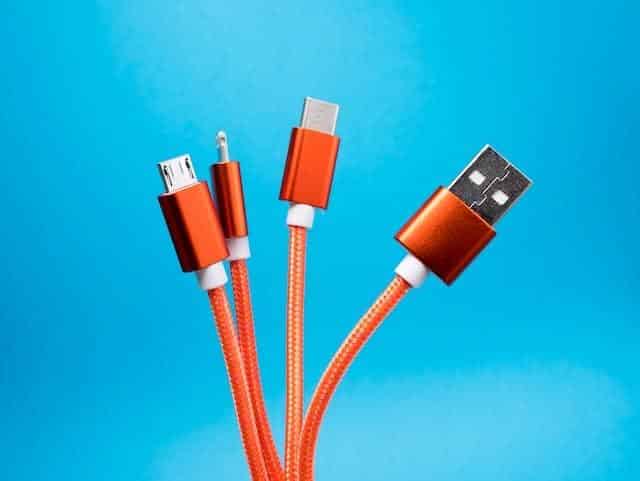
Photo by Lucian Alexe
12. General Motors Will Phase Out Apple CarPlay On Upcoming EVs
As part of its plan to completely phase out gas-powered vehicles by 2035, General Motors has announced it will no longer include Apple CarPlay and Android Auto in its future electric cars, starting with the 2024 Chevrolet Blazer.
CarPlay and Android Auto allow drivers to access their phone’s features on their car’s dashboard screens, but GM intends to replace them with its Google-based software.
According to Reuters, this new firmware will come with Google Maps, Google Assistant, and other popular apps like Spotify and Audible. While CarPlay and Android Auto will be removed from electric vehicles, they will remain available in gas-powered cars.
13. Declining Revenue in Key Markets
Apple has been seeing decline in its revenue for its iPhone in key markets like China due to competition from local brands, tariffs and regulatory issues.
Apple’s revenue from China saw the biggest ever year-on-year drop of 7.73% from $72.56B in 2023 to $66.95B in 2024.
Image Source: Bullfincher.io
14. Apple Forced to Open iOS features to other gadget.
Apple was forced by European Nations to open the iPhone and iPad’s operating system to allow compatibility of its ecosystem with other Application Developers, which will allow third-party smartwatches to interact and display iOS notifications.
The EU has specified 9 iOS exclusive connectivity features that Apple needs to make available for other platforms, like opening the iOS notifications, allowing third-party apps to display and interact with smartwatches, audio switching from Apple devices to other third-party earphones and headsets that don’t force iPhone users to buy AirPods, etc.
15. Trade and Tariff risks
Apple has a large global business. Restrictions on international trade, such as tariffs, imports, and export controls, can materially impact Apple’s supply chain and business. The restrictive measures from the government can result in a large increase in the cost of the company’s raw materials, components, and products. Rerouting the supply chain can be time-consuming and expensive and disrupt the company’s operations.
For example, Apple’s manufacturing is substantially performed by outsourced partners in China, India, Japan, Taiwan, South Korea, and Vietnam. Any geopolitical tensions or conflicts can significantly disrupt the company’s global supply chain, causing a dent in its revenue margins. The company can require significant expenditures to resume operations, substantial recovery time, and significant sales loss.
16. Constant Technology changes
Apple’s products are exposed to stiff competition in global markets, resulting in the frequent introduction of new products and services, evolving industry standards, short product life cycles, constant revamping of product pricing and performance, rapid technological advancements by consumers, and consumer price sensitivity.
To stay relevant, Apple has to ensure the continuing and timely introduction of innovative technology, products, and services. Since Apple designs and develops all of its products, hardware, operating systems, software applications, etc., it has to incur significant investment in R&D without any assurance that these innovations will achieve the expected returns.
Apple also risks its competitors imitating its product features and applications or offering competitive solutions, thus compelling Apple to continually improve its products and services to maintain its design and functional advantages.
17. Dependence on third-party software developers
The popularity of Apple’s products depends a lot on the accessibility of third-party software applications and services. Third-party developers may be less inclined to develop or upgrade Apple’s products or software and opt for competitors with large market shares, especially in products like smartphones, personal computers, and tablets.
Apple relies on the continued availability and development of compelling and innovative software since its products are subject to rapid technological changes. Third-party developers are required to keep pace with these constant changes. Any failure on the third-party developer’s part can lead to failure to deliver an improved customer experience and lower customer demand for the company’s products.
18. Data Protection
Apple’s global business makes it subject to numerous state, federal, and international laws relating to the collection, retention, security, use, and transfer of various types of personal information within the company and its international subsidiaries. These laws are subject to changes and can be inconsistent from jurisdiction to jurisdiction. Complying with emerging and evolving regulatory requirements is time-consuming and costly and may require Apple to change its business practices.
Apple provides disclosure on its use and disclosure of personal information through its privacy policy information on its website, other privacy notices offered to customers, and press statements; any noncompliance can lead to inquiries or legal proceedings against the company, causing reputational impacts and significant legal penalties and liabilities.
Apple is also subject to obligations for information considered sensitive under certain laws, such as health, biometric, and financial data, which are subject to additional privacy, security, and breach notification requirements. Failure to handle data in a permitted manner can result in litigation, Government investigations, liability for investigatory expenses, and significant fees or fines.
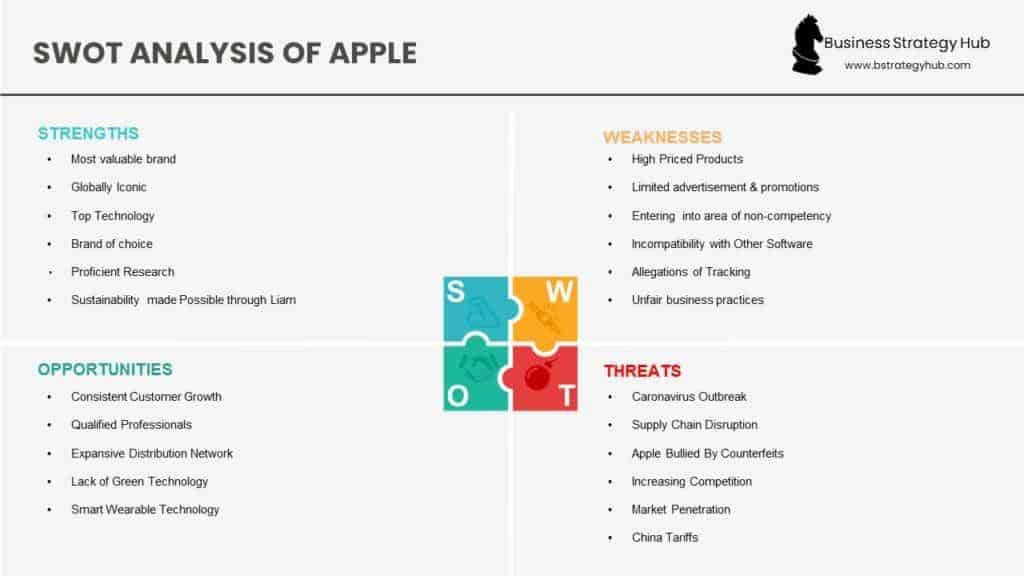
SWOT analysis of Apple
Final Thoughts
This Apple SWOT Analysis report provides exclusive details about Apple, making it ideal for case studies. The report examines Apple’s strengths, weaknesses, opportunities, and threats.
References & more information
- Apple annual filings
- Interbrand
- NPS score – Survey Sparrow
- IDC Smartphone Marketshare Tracker
- Smart wearable market size and share analysis – Mordor Intelligence
- Apple tops Indian Smartphone Market – The Economics Times
- Market share of mobile operating systems worldwide – Statista
- Apple boosts US investment plans with $500 billion pledge amid Trump tariff threat
- Tim Cook’s Salary Cut
- Apple Environment Report
- Apple’s $500 Billion pledge
- Apple’s AI Initiative
Tell us what you think? Did you find this article interesting? Share your thoughts and experiences in the comments section below.

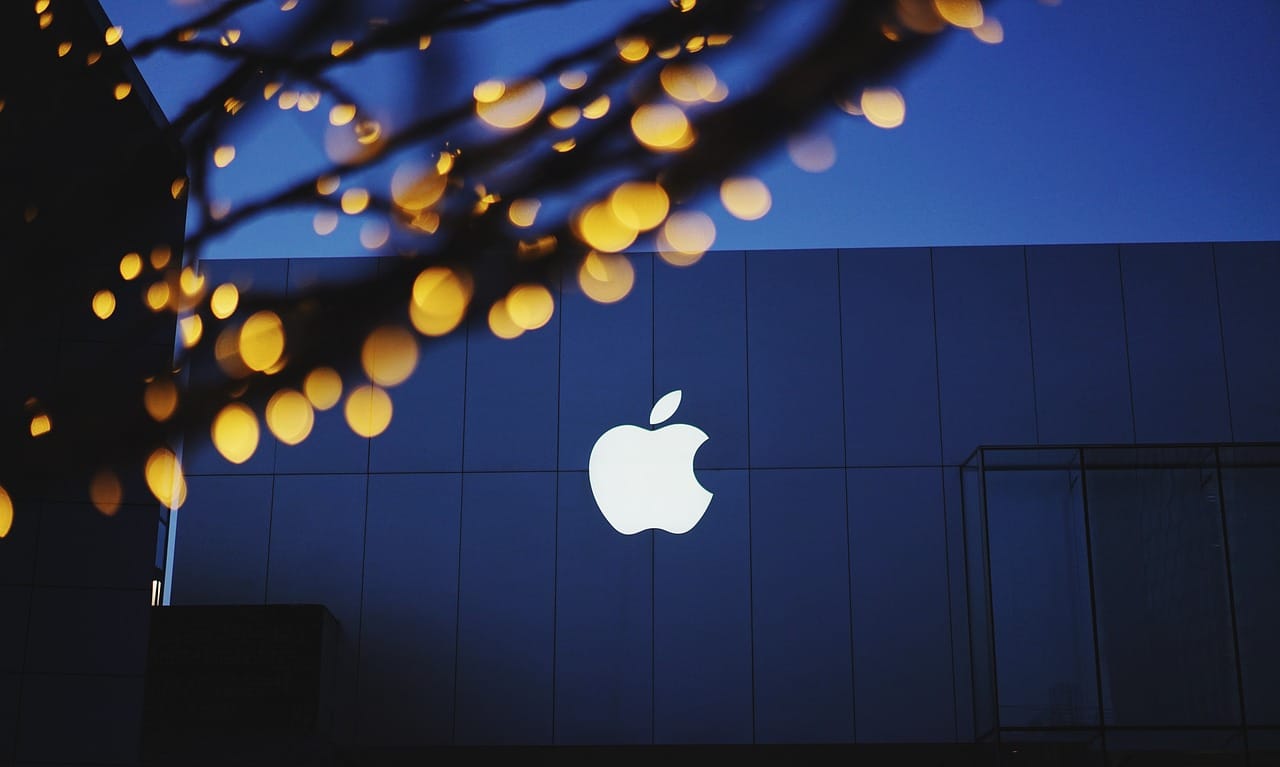
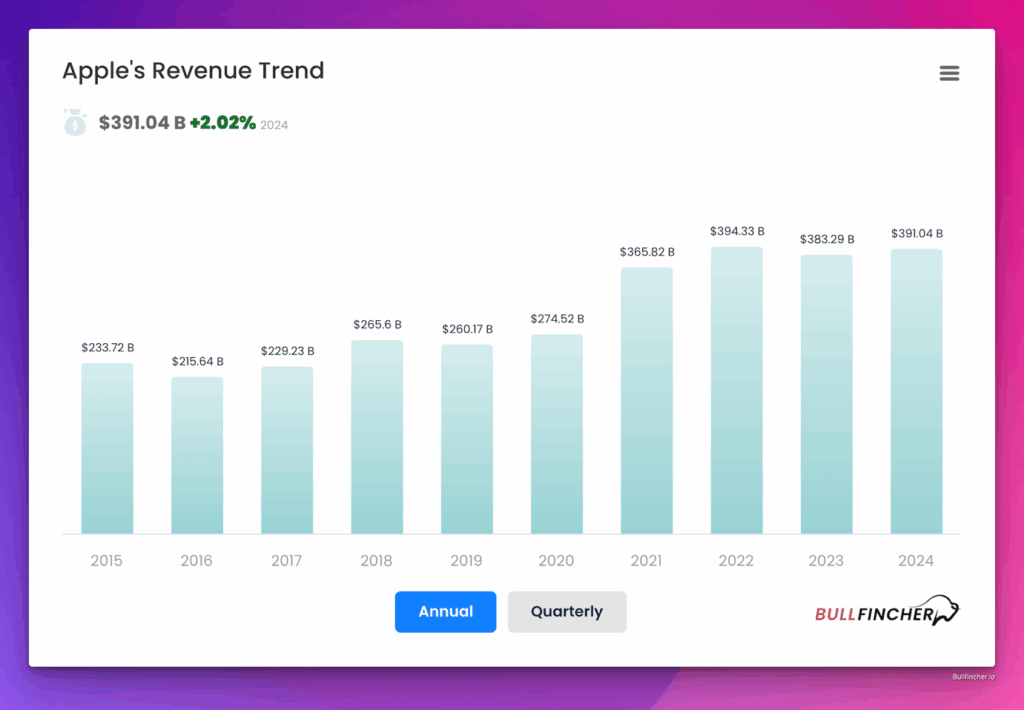
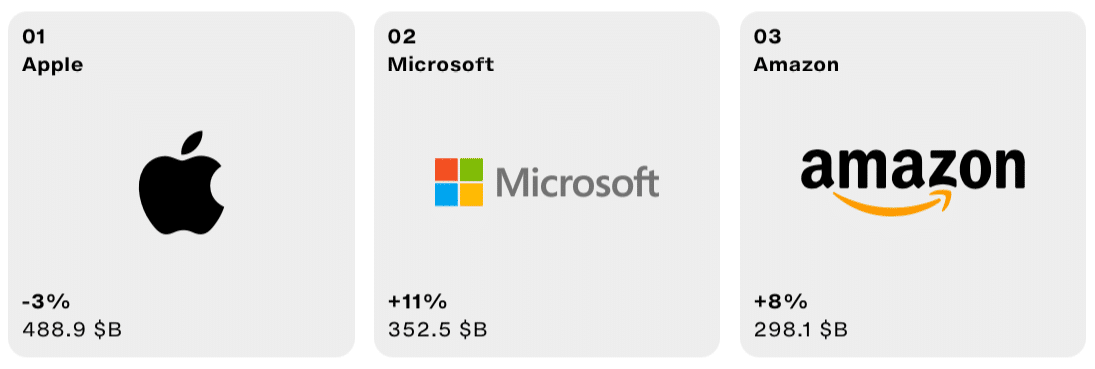
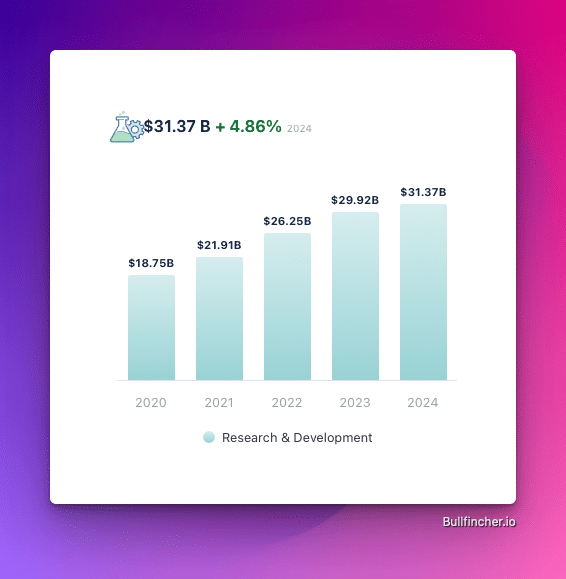
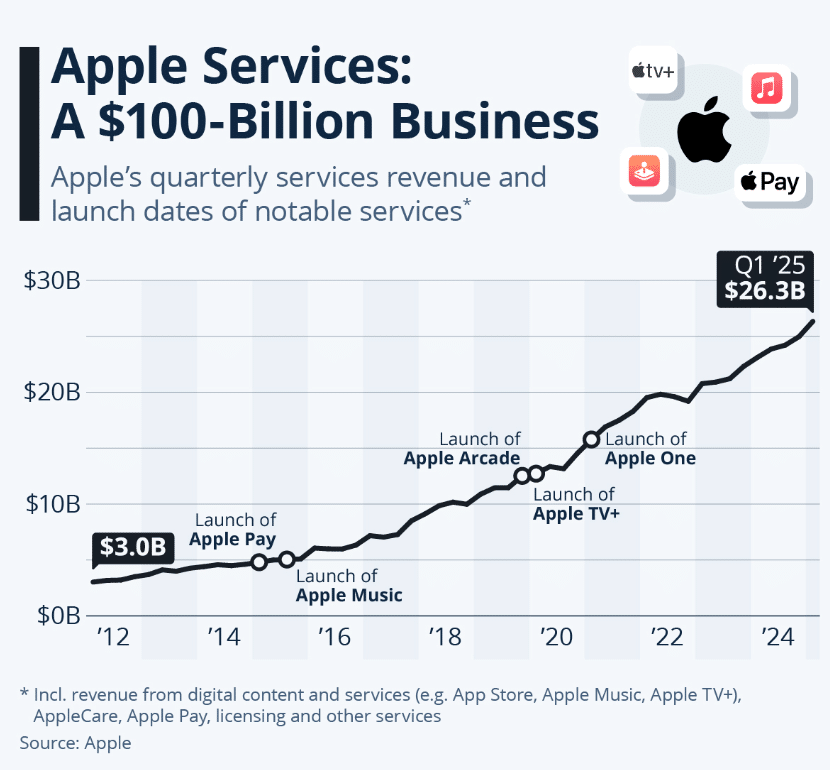
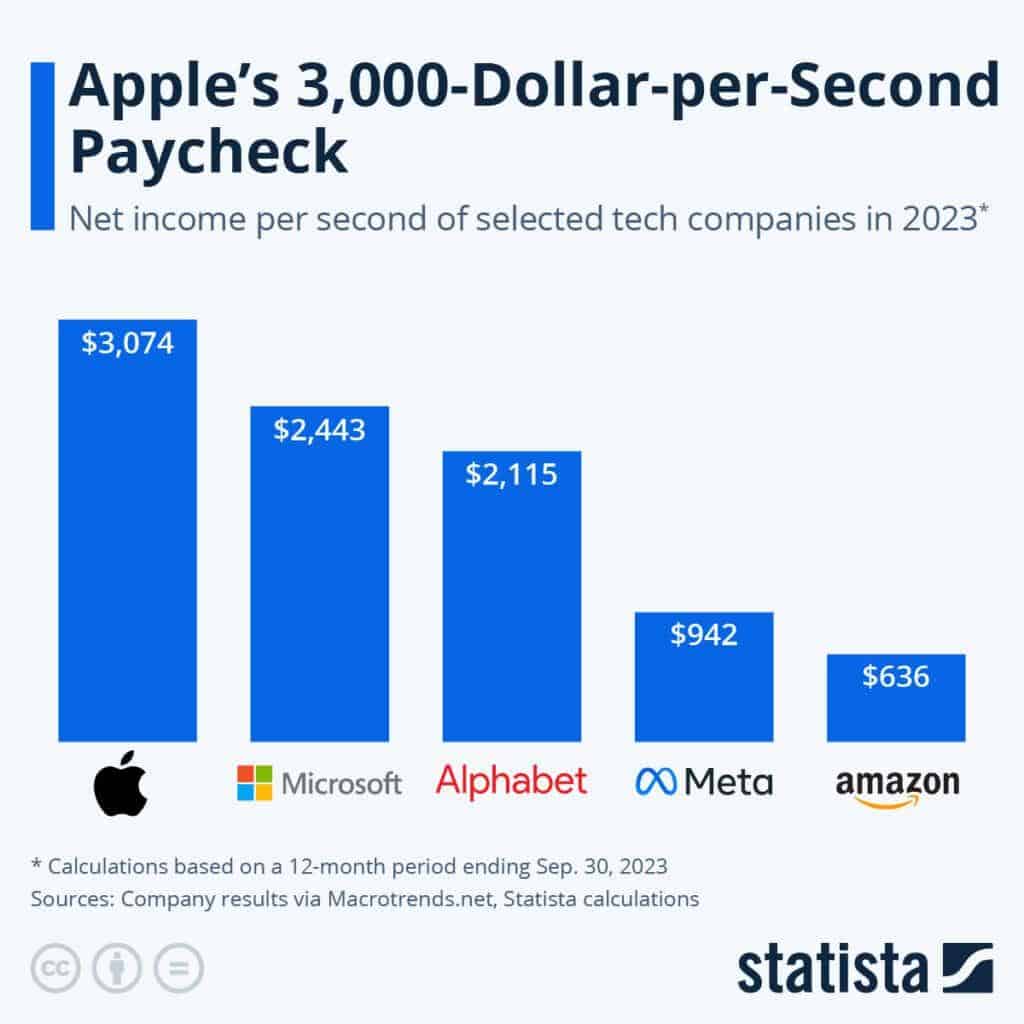
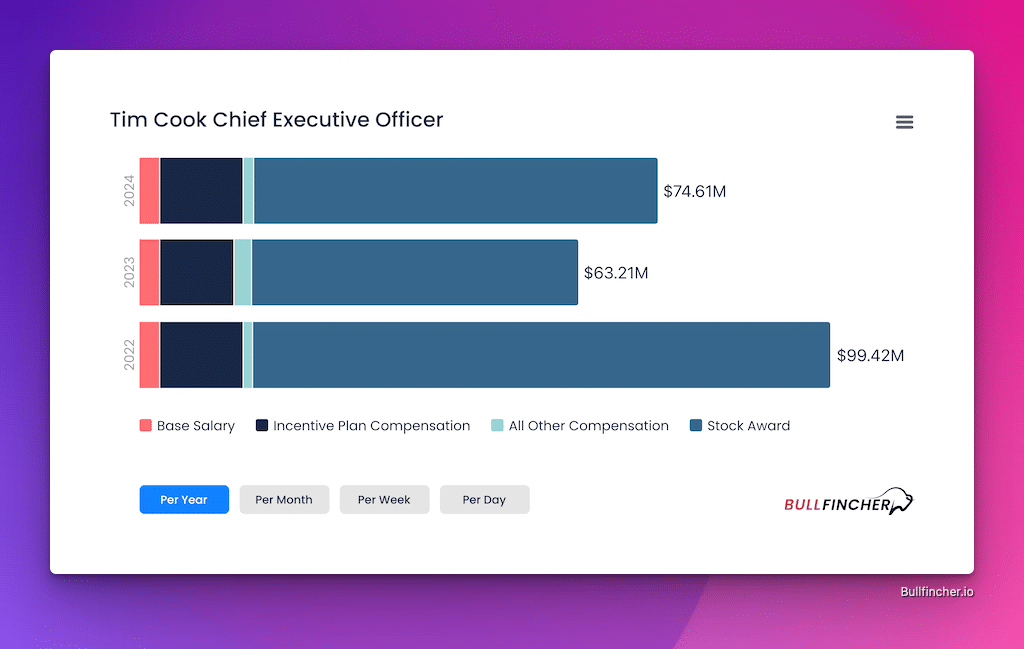
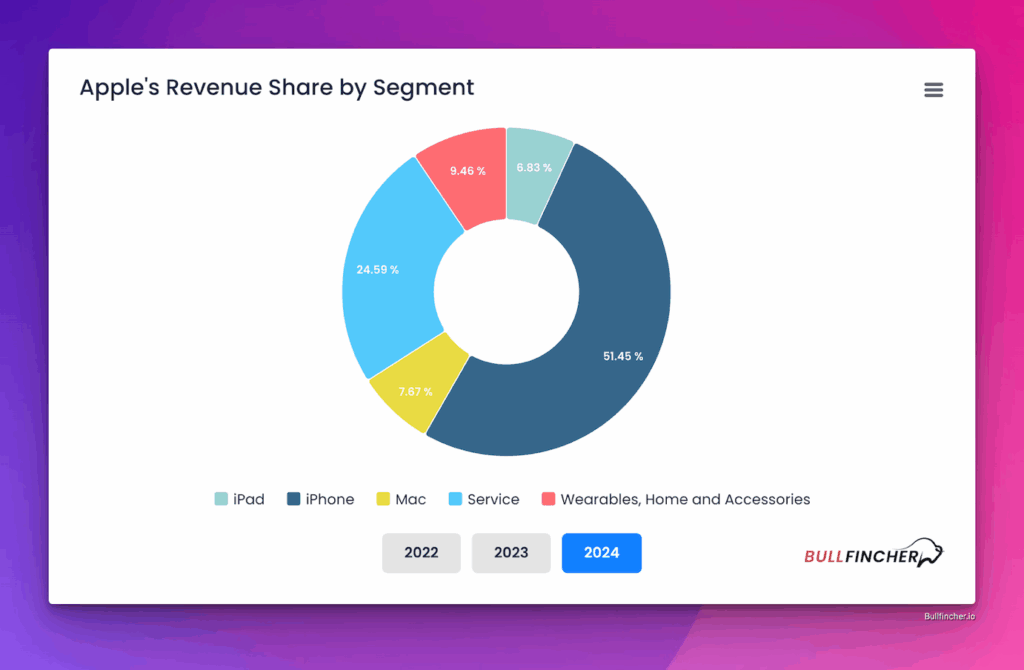
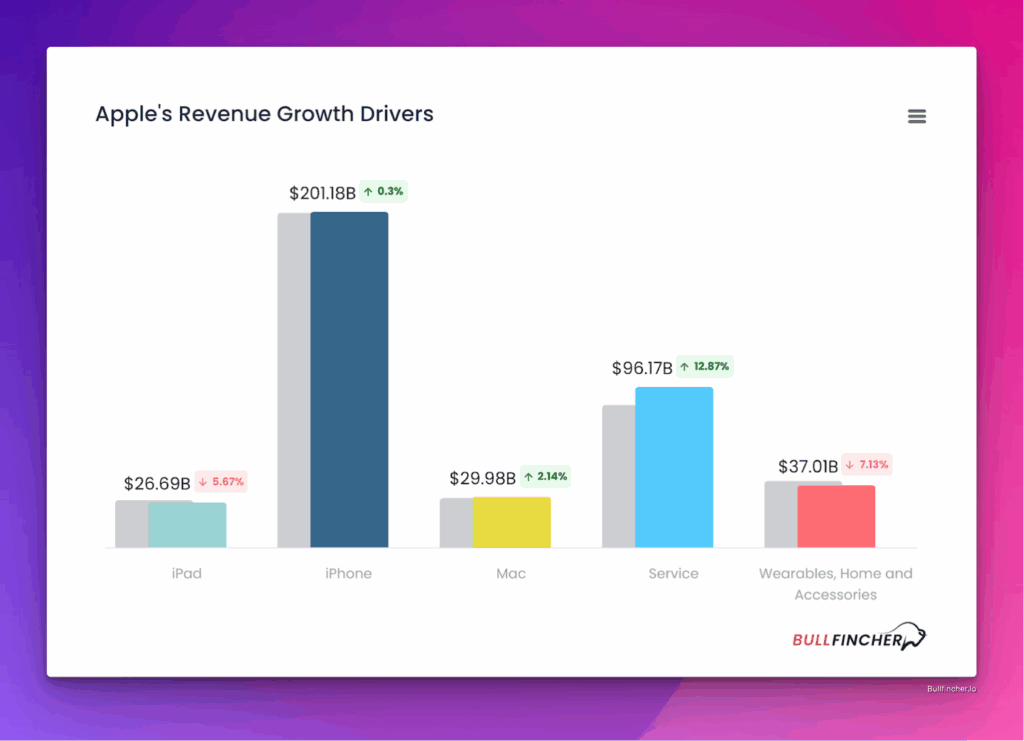
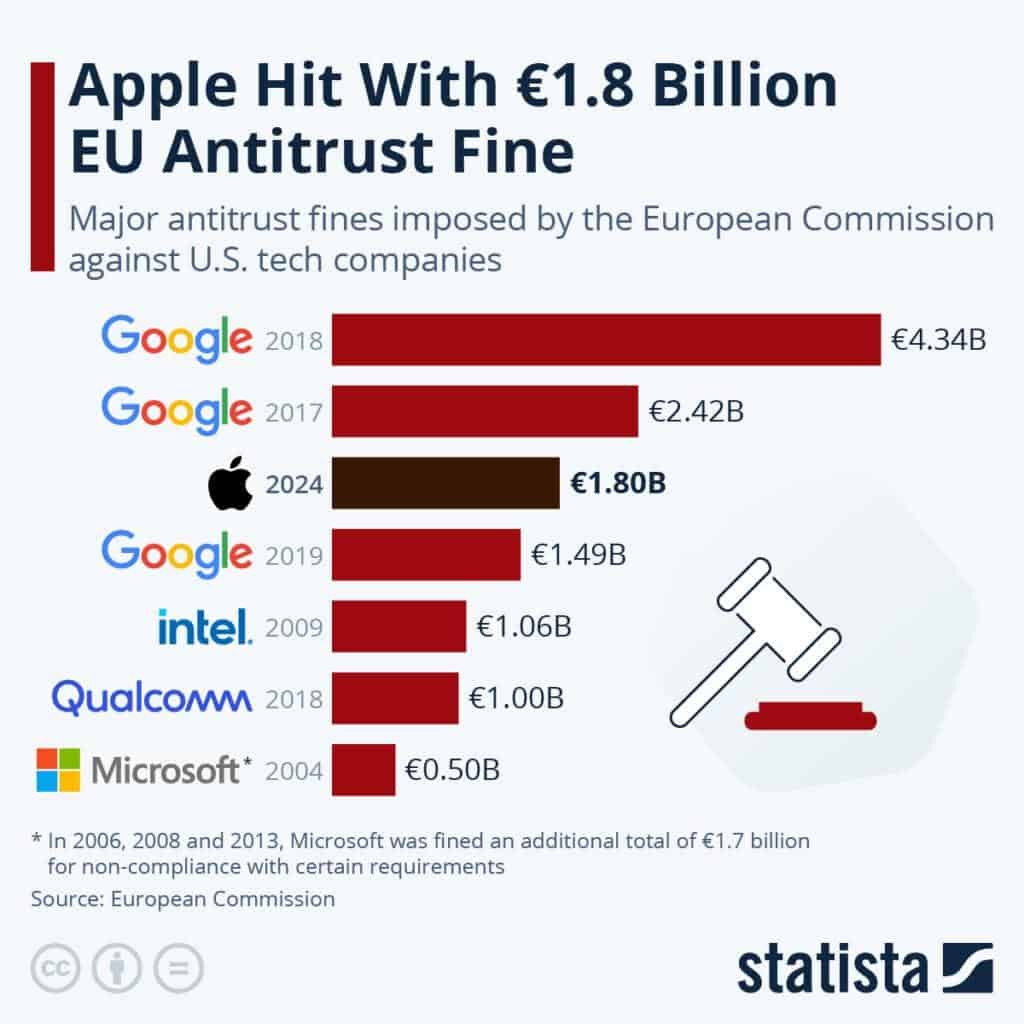
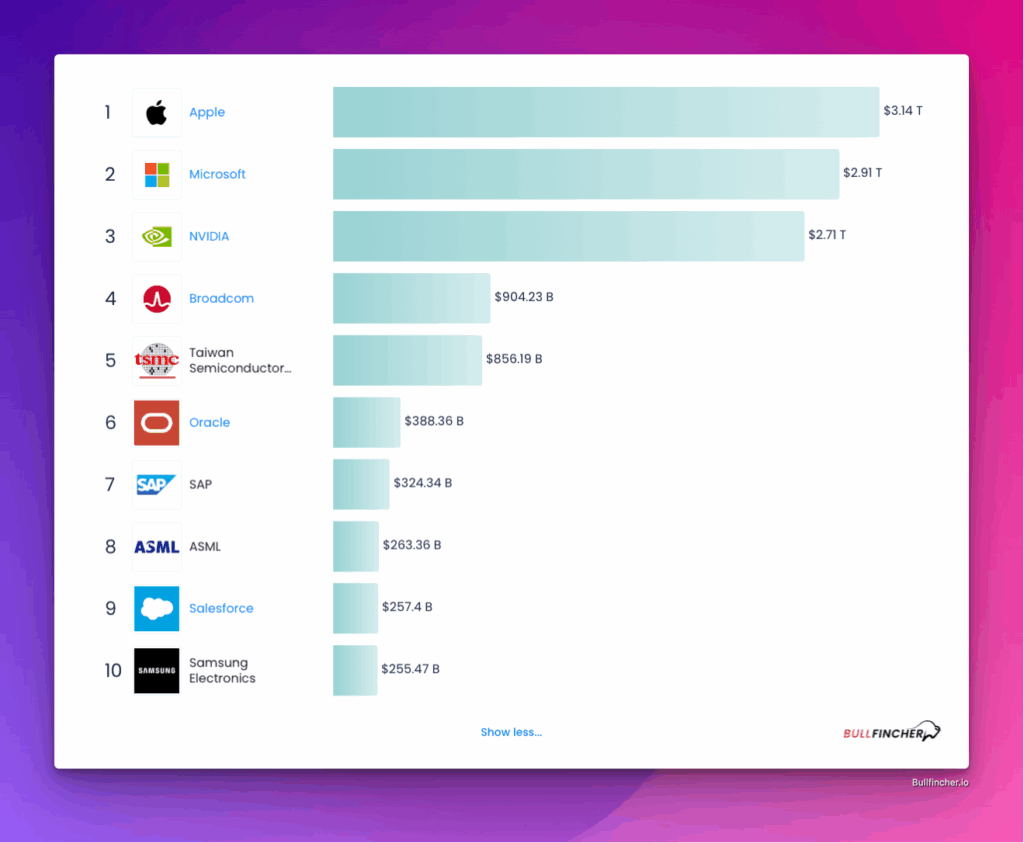
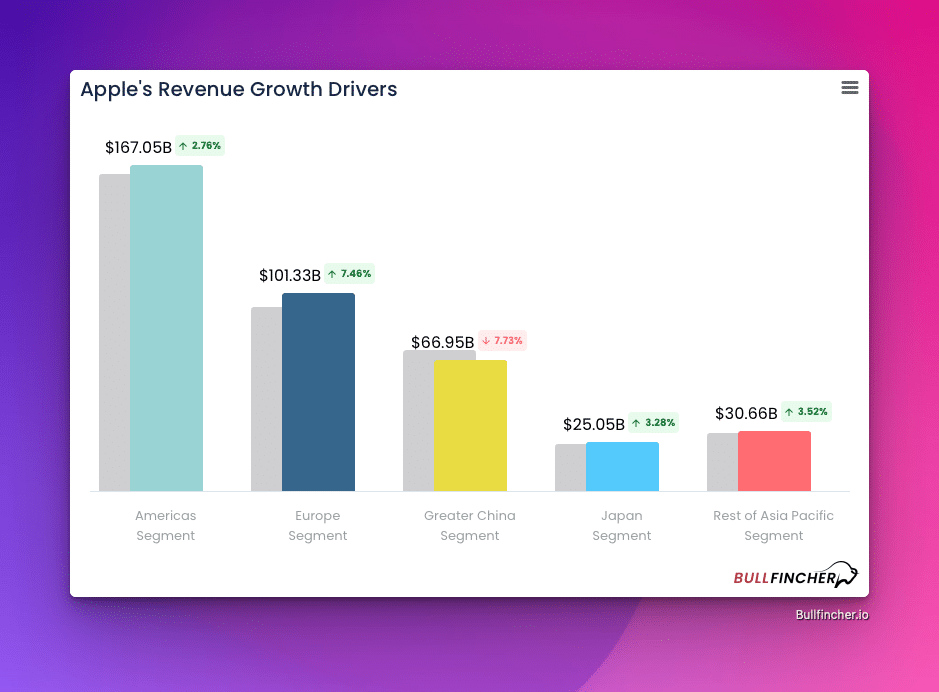







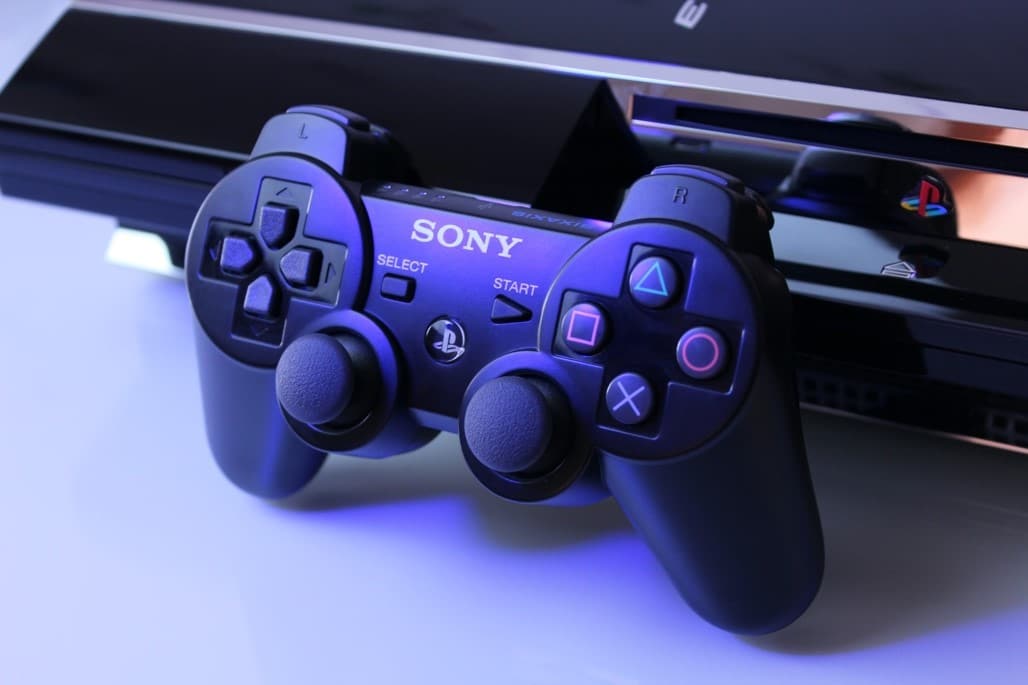


thank you so much for your hard work man <3
no problem
did you make this
yes x
bless your soul
its great, Keep posting for other giant companies. Thank you so much for the hard work :-).
Thanks Ribana for the kind words !
I am glad you liked it.
Wouldn’t you say Apple has taken the opportunity in “smart wearables”? ie Apple Watch
Good point Carl !
Apple continues to grow its wearable category i.e., Apple Watch, AirPods, etc.
Smart wearable is still a very new category, there are a lot of opportunities to explore and grow here.
There could be many new form factors, for example, smart ring, smart headgear, smart shoe, smart glasses with a possible application in healthcare, gaming, etc. We are just scratching the surface….
highly appreciate the time you have put into this thanks man. : )
You are welcome!
Glad you liked the analysis.
Thank you very much for this analysis SG!
🙂
thanks… nice study outcome.. tq for the article..
Currently doing an assignment on iPhone and cried profusely because of a mental breakdown. Thank you for this, I now have hope !
Thank you!! Made my research fun and easy!
Glad you liked the analysis 🙂
Very informative and factual. A good source for reference! Thank you!
Thank you!
Can you share your references, please?
Hi Diavoletta,
You can use below reference:
Gupta, S. K. Apple SWOT 2022 | SWOT Analysis of Apple.
Business Strategy Hub
Hope this helps
Happy Reading!
Very comprehensive. Thank you!
Thanks Mina!